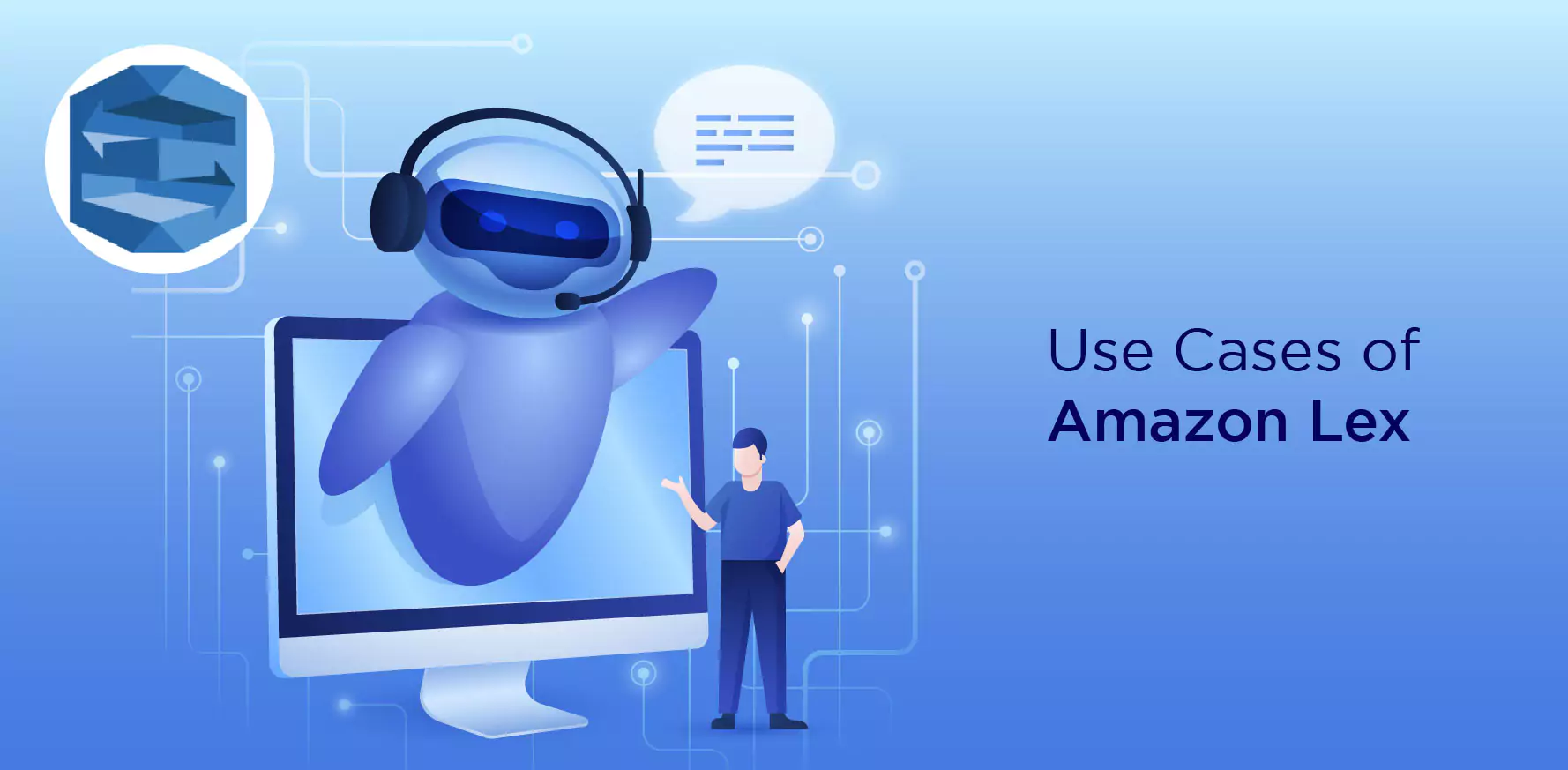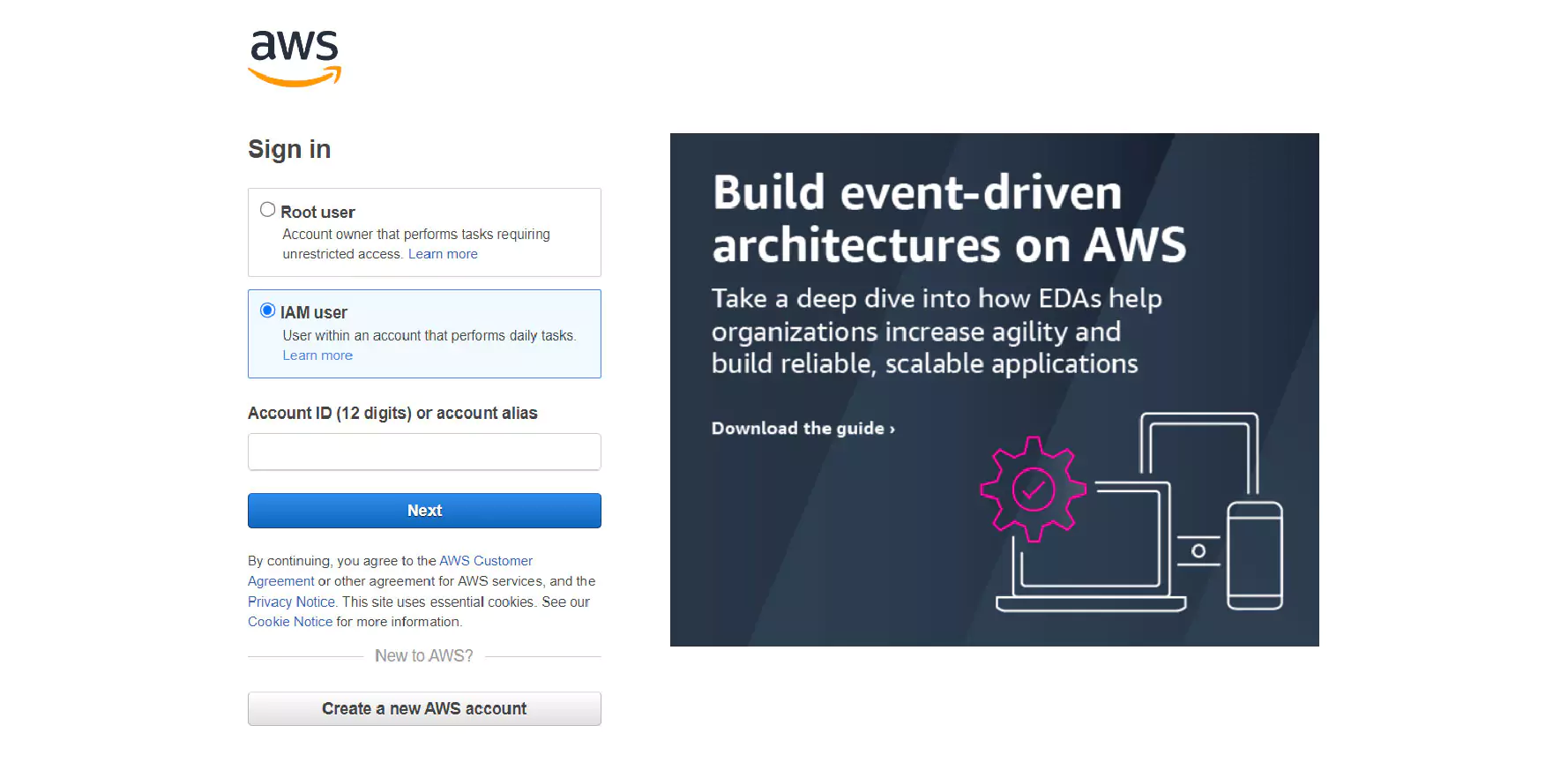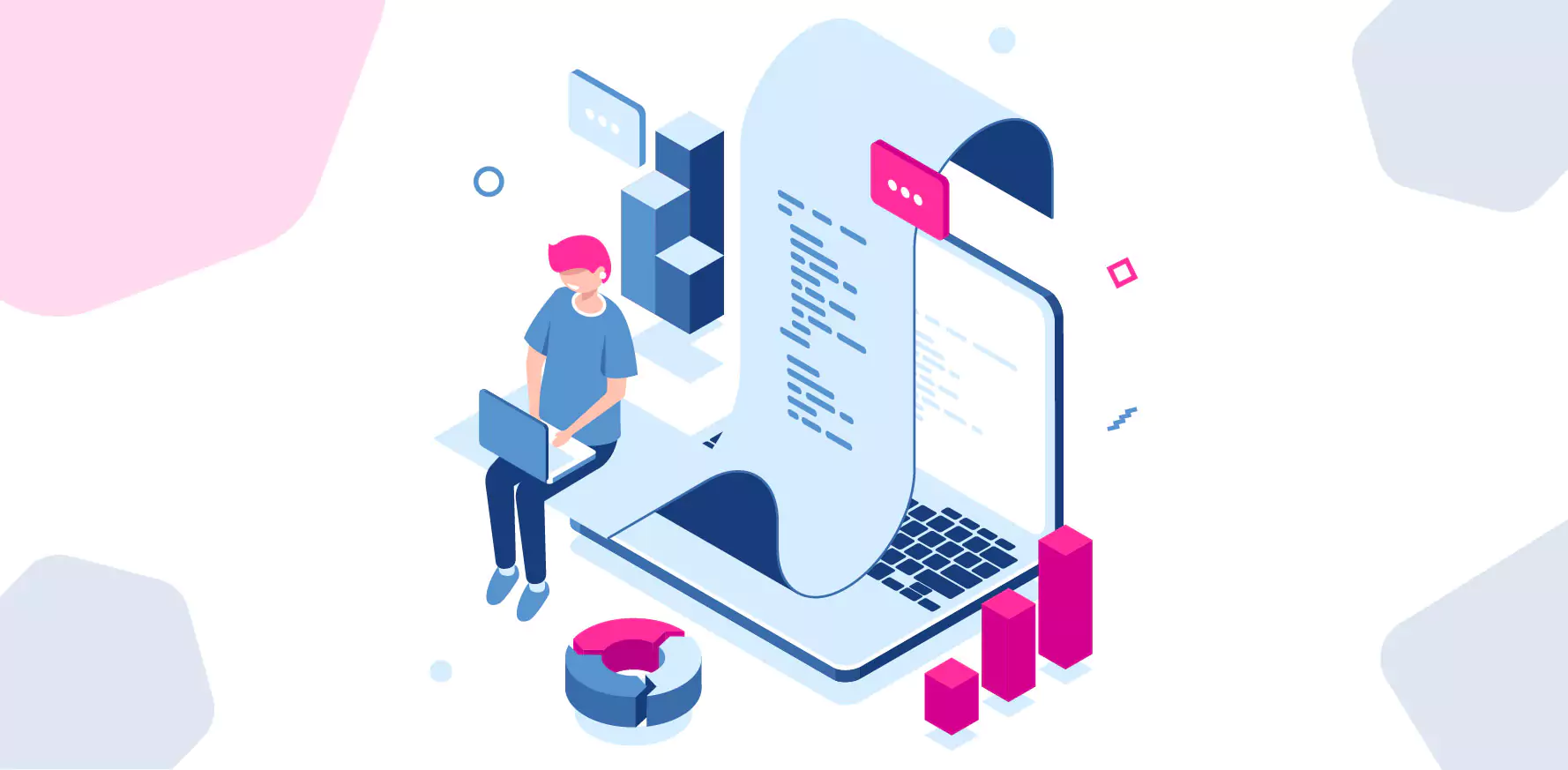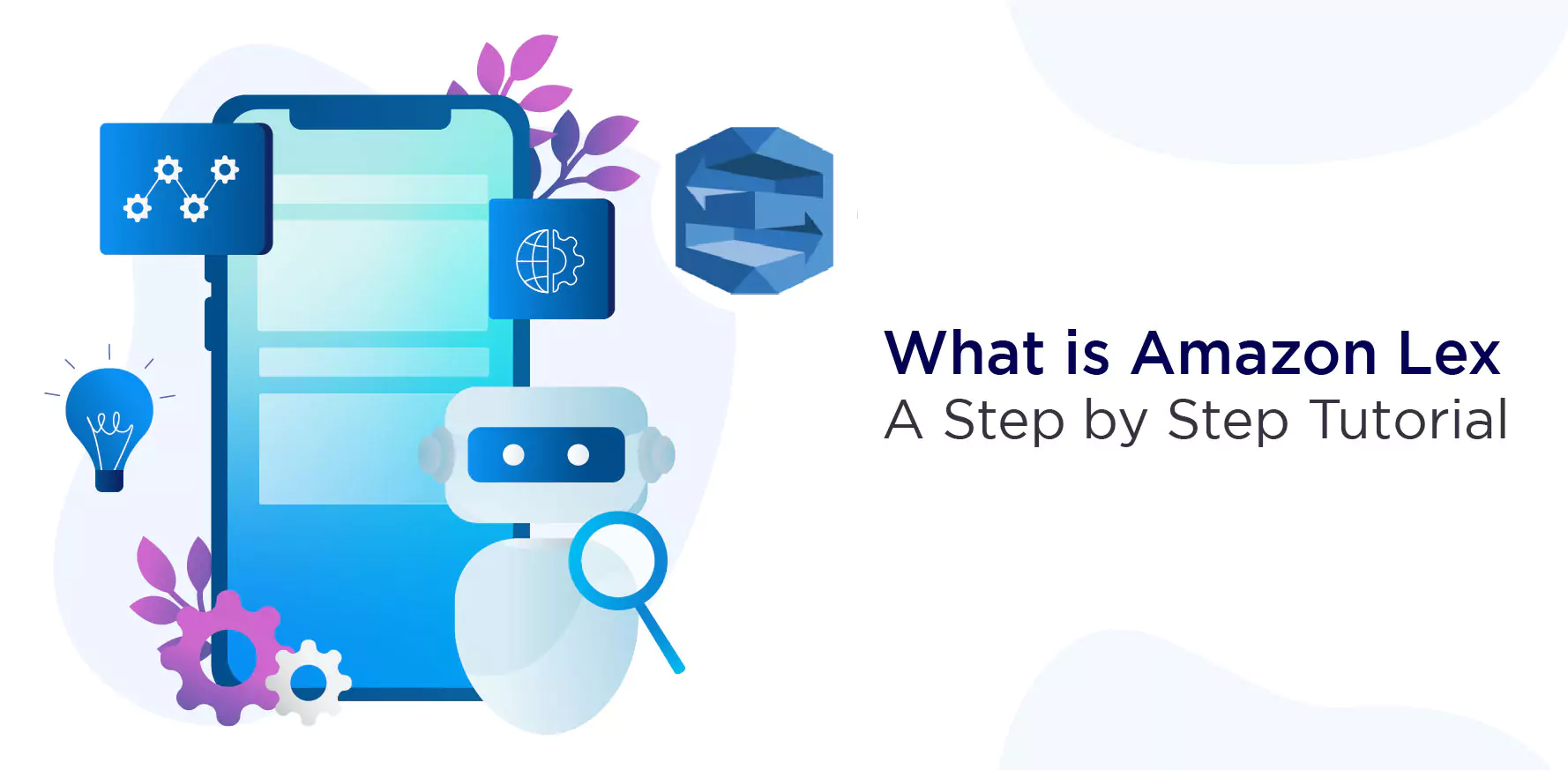Introduction
Amazon Lex is an AWS platform that offers vocal and text-based chatbots for apps. The same chat technology that powers Amazon lex is now available to each developer with Amazon Lex, enabling developers to implement intelligent, natural language chatbots into your prospective and updated apps. Amazon Lex combines the capabilities and flexibility of natural language understanding (NLU) and automatic voice commands (AVC) to help the developers establish new product offerings and create highly interactive user experiences with genuine, conversational interaction and new categories of products.
Amazon Lex maintains a chat record and adjusts the answers as required. You can use the dashboard to develop, evaluate, and deploy a text or vocal chatbot. No machine-learning information is necessary to create a chatbot with Amazon Lex; all you have to do is set the basic flow of the conversation in the Lex dashboard.
AWS Lambda was pre-integrated with Amazon Lex, and you can quickly connect with several other Cloud services, such as Amazon Cognito, AWS Mobile Hub, Amazon CloudWatch, and Amazon DynamoDB. Using pre-built cloud hosting enterprise connectors, bots might use Lambda to connect to data in SaaS systems like Salesforce, HubSpot, and Marketo.
There are two versions of Amazon Lex: Amazon Lex 1 and Amazon Lex 2 with changed designs. In short, it's a refactoring designed to make it easier for developers to add and modify things while working on multilingual chatbot development. If you're an Amazon Lex version 1 developer, you should be able to go right into version 2 without much difficulty. You should be able to set up a bot in Amazon Lex version 2. The Streaming to an Amazon Lex bot feature can assist you in creating something similar to Alexa, with users not having to click the send or mic button after each message is completed.
Benefits of Amazon Lex
1. Flexibility — Amazon Lex helps users over developing your chatbot within a moment by using the dashboard. You can deploy hardware or maintain infrastructure to fuel your bot experience because Amazon Lex scales effortlessly.
2. Reduce the manual effort—Evaluate multiple lines of transcripts to find goals and compile a list of information necessary to satisfy them, minimizing the duration of time in manually developing conversations.
3. Machine learning technology that is more affordable — Amazon Lex, which uses the same technology like Alexa, integrates ASR and NLU to produce a Speech-Language Understanding (SLU) system. Additionally, it enables SLU to take natural language speech and text input, interpret the intent, and fulfill the user's goal by activating the correct marketing procedure.
Natural language processing and language generation understanding are among the most challenging problems in computer science, demanding the use of sophisticated deep learning algorithms trained on large amounts of data and infrastructure. Amazon Lex, driven by the same technology as Alexa, makes deep learning capabilities affordable to all developers. Amazon Lex chatbot transforms input speech to text. It recognizes user intent to provide an intelligent response, allowing you to focus on creating bots with differentiated value-add for your consumers and defining entirely new categories of products enabled by chatbots.
4. Automatic deployment and growth — Anyone can develop, test, and deploy their chatbots directly from the Amazon Lex dashboard with Amazon Lex. Users may upload their voice or text chatbot on mobile devices, online apps, and chat services using Amazon Lex (for example, Facebook Messenger).
5. Cost-effectiveness – There are no installation fees or minimum fees with Amazon Lex. Users will only be compensated for the text or speech requests they make. The service is cost-effective for developing chatbots because of its pay-as-you-go pricing and minimal cost per request. With Amazon Lex's free version, you may try it out without spending any money.
Use Cases of Amazon Lex

1. Call Center Voice Assistants and Chatbots:
By using Amazon Lex chatbot in a call center, Users get information, for example, requesting a balance on an account, password change, or arranging an appointment, without speaking to the agency.
These chatbots work on programmed speech recognition and general language understanding to examine the user objective, maintain context, and smoothly control the chat.
2. QnA Bots and Informational Bots:
By using the Amazon Lex to make chatbots for the regular client, requests are straightforward, for example, getting to the game scores, most recent news updates, or weather conditions updates. After you make your Lex bot, you can utilize them on chat services, cell phones, and IoT gadgets with the help of rich message support.
3. Application Bots:
We can easily integrate a voice or message chat interface to create bots on the cell phone that can assist clients with many day-to-day tasks, for example, getting to their ledger, ordering food, booking tickets, or taxi booking. It is easily linked with Amazon Cognito so that you can handle user management, authentication, and sync across all devices.
4. Enterprise Productivity chatbots:
You can use Lex to develop enterprise productivity chatbots that establish ordinary work activities and enhance Enterprise efficiencies. For instance, in marketing performance from HubSpot, workers can review sales data from Salesforce, and client service positions from Endesa, directly from their chatbots.
Step by step Tutorial to Amazon Lex
Step 1: Create an AWS account
If you don't have an AWS account, create one.
Step 2: Create an IAM user, grant your administrative approvals and save credentials.

AWS accounts require access keys to connect to and operate your Amazon Lex bot. The access keys are created and handled in AWS Identity and Access Management (IAM) services.
To obtain an access key, you want to:
(i) Go to your AWS Management Console > IAM Dashboard, or you can search AWS services for "IAM."
(ii) From the IAM root menu, click Users, and afterward, click Add user to make an IAM user and allow administrative approvals. Add a user to create credentials that can be used to access AWS.
(iii) Copy the access key ID (e.g., ADSJFJSDJ9SNFFSS) and the secret access key (e.g., wHATaJJKOLK/L7SRTDUH/oPckKiJDYKSDJFFJD). Save this for an AWS Lex bot/chat suggestions integration account.
Step 3: Add Amazon Lex as a service to create a model bot
(i)Log in to the AWS Management Console and go to the Amazon Lex console.
(ii) You can create a custom bot or develop a ready-to-use one with a sample template on the Create your bot page. For the example method, choose the Book Trip sample.
(iii)Your created Bot page will open. And you can promote your Amazon Lex bot.
Step 4: Examine the bot workspace
It will open the bot workspace. Four tabs will appear at the top: Editor, Settings, Channels, and Monitoring. In this part, we will be concentrating on the Editor tab only. You can return to different charges afterward.
Step 5: Edit intent properties
Intents are tasks that are activated by keywords that the customer enters. Customers' intentions might be considered as what customers desire to do. The initial intent in our sample Lex bot, for example, is "BookCab," which is what the customer wants (book a car) and what the bot identifies it needs to accomplish based on the customer's text input.
Properties
Sample statements: Words (keywords) that trigger a reaction (e.g., "Reserve a car" or "make a car reservation" or "book a car")
AWS Lambda Service startup and verification: AWS Lambda Function verifies the customer's input.
Modules: Input that the consumer must submit in needed to finalize the intended action (e.g., slot "PickUpCity" collects customer data about the city in which the car will be picked up)
Verification prompt: Queries that verify the customer's intention and prompt data input (e.g., "Okay, I've got you booked in for a car pick-up in PickUpCity. Is it necessary for me to keep hiring the car? ")
Fulfillment: AWS business logic is expected to undertake the customer's request.
AWS Lamda Procedure: The procedure that your Amazon Lex bot executes as a code hook; it can perform setup and verification, fulfillment, or both.
Return parameters to the client: Send intent data to the client application (i.e., Bright Pattern scenario) for intent fulfillment.
Response: Messages or answer cards that terminate the intent or start a new one.
Step 6: Save and create
(i) Leave everything on the Editor tab for this model procedure.
(ii) Be sure to click on the Save button if you make any changes.
(iii) Click on the Build button. It builds the bot with the designed objectives.
Step 7: Test it

When the build ends, you can test it in the chat window.
(i) On the right side of the screen, click Test chatbot to pop out the chat window.
(ii) Type a request message, e.g., "I want to book a train ticket." See the results.
User: Book me a train to New Delhi from Mumbai.
Bot: Sure! Which date do you want to travel?
User: I am planning to travel on 10th May.
Bot: Do you want me to book a return ticket as well?
User: Yes. I want to.
Bot: Please let me know the date of your return.
User: It is on 15th May.
Bot: All right. I am searching for a train for 10th May and returning on 15th May. Here are the results.
Conclusion
The incredible power of natural language understanding and speech recognition through Amazon Lex to understand and recognize the speech, its broad adoption across industries enables organizations and customers to rapidly and efficiently manage repetitive and monotonous requests.
Amazon Lex combines the power and flexibility of natural language understanding (NLU) and automatic voice recognition (ASR) to help you establish new product lines and create a highly interactive customer experience with genuine, honest communication.
BotPenguin is an AI-powered chatbot platform that enables you to quickly and easily build incredible chatbots to communicate and engage your customers on the website, Facebook messenger, and other platforms.



